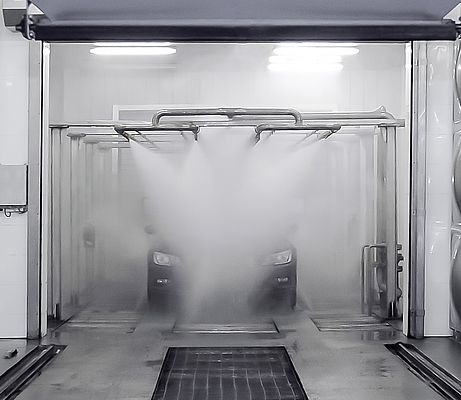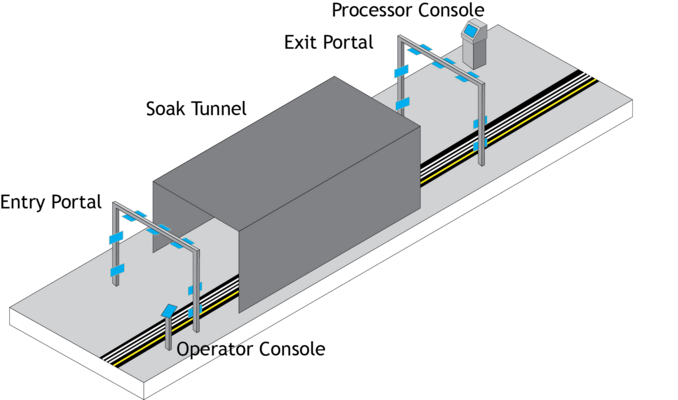As the next quantum leap in manufacturing automation is happening – the advent of smart factories – the automotive industry is, as usual, amongst the frontrunners. Opportunities resulting from smart factories connected by the Industrial Internet of Things (IIoT) exist in production planning, production engineering, production execution and also test / inspection.
One area that has been problematic for automakers has been detecting and dealing with moisture ingress into vehicles. This is a significant quality issue that has substantial downstream costs if not detected and rectified at the production stage. And, while the costs of rectification may be high, the damage to brand reputation when leaky products ship to customers is far higher.
Visual inspection methods, although somewhat ‘old school’ and reliant on human attention to detail, can reveal significant leaks, but small leaks, often in inaccessible areas, are difficult or even impossible to find. By automating the process of detecting leaks, the inconsistencies related to visual inspection by humans are addressed and, valuable data is gathered that can improve the design and manufacturing processes.
Challenges of leak testing
Although the world of electronics is shifting, one thing will never change; water and electronics are not good bedfellows. Yet in many applications, especially equipment such as electrical cabinets for use outdoors in remote locations, the only thing standing between the electronics and the weather is the case or cabinet that the electronics is packaged in – or the body and it’s seals in the case of a vehicle.
Often, packaging for electronic systems is formally tested and qualified during the development cycle to ensure that it is sufficiently sealed to meet the rigors of the environment in which it will be used. However, it can also be necessary to test for leaks during production, especially if buttons, indicators or displays are added that require holes to be created in the case and then sealed.
For smaller modules, a common approach is immersion testing followed by a visual inspection for the presence of bubbles indicating that a leak is present. For larger items such as electronic equipment for use outdoors, vehicles or railroad rolling stock, immersion is not an option so water sprays are often used. This generally involves spraying with robotically controlled high-pressure jets from multiple angles to probe any and all areas of potential weakness and accelerate any water ingress.
In almost all cases, the product will pass through a spray zone or have water introduced, and then be inspected for leaks. The most common method of inspection is to use production line operators to visually inspect the product after the test. In some cases, water contact indicator tapes that change color when wet may be used to ease the process. In any event, this inspection method is highly prone to error – operators are always under time pressure and may have other unrelated tasks to perform at the same time as the inspection, they are also prone to distraction and may also struggle to see small leaks in hard-to-access areas of the product.
The inspection method is also expensive. Depending on the size and complexity of the product, it will take up operator time that costs money and slows the production process. And, even more expensive, is when a leak is missed and the faulty product makes its way to a business user or a consumer who subsequently discovers the fault. In this case, costs can include return and replacement, consequential damage caused by the water leak and, ultimately, a significant loss of reputation for the manufacturer.
The ‘smart’ wireless approach
One innovative and ‘smart’ approach that has been developed to address water ingress in products is the RFM5126 Moisture Intrusion Detection System. This turnkey solution not only allows manufacturers in smart factories to determine if water has penetrated, it can provide more data about how and where any leak occurs, providing valuable data for product or process improvement.
At the heart of the integrated system are ON Semiconductor’s battery-free wireless moisture sensors that are available under the Smart Passive Sensing™ and SPS™ brand names. These RAIN/UHF sensors have an adhesive backing that allows them to be securely affixed inside the product during assembly and have the option of a water wicking ‘tail’ that allows a greater area to be covered. A positive reading is generated with as little as 0.05ml of water – a ‘single drop’ in layman’s terms.
After the spray process, the tags are read either by passing through an area with a fixed set of readers or manually with a handheld reader. The passive sensors require no battery power as they use energy harvested from the probing signal to transmit the presence (or absence) of water.
On the production floor, the RF readers can immediately indicate the presence of a leak in a specific product and can even indicate the location of the leak, based upon which sensor(s) are indicating the presence of moisture. In smart factories where the end product moves on a conveyor, the presence of a leak may then cause the product to be moved to another conveyor that takes the product to another area of the factory so that rework may be done to eliminate the leak before being put back into the main production line.
Through aggregating leak data over time, extremely valuable feedback can be provided and dissected in a number of ways. This data can either be analyzed locally or a connected smart factory can relay the data via the IIoT to other locations, such as a headquarters or R&D center that may need to take action based on the data. Simple analysis over time will indicate whether there is an issue with a particular product model or assembly process.
Systems could also drill down to individual shifts or even operators, perhaps finding areas of consistent human error. The consolidated data can also be used by the research and development function to identify design weaknesses and upgrade product designs as well as avoiding the issue in future products.
By Jeremy Correale, Automotive Marketing Manager at ON Semiconductor
























